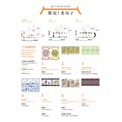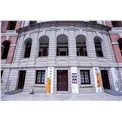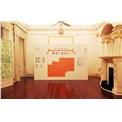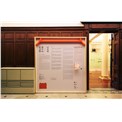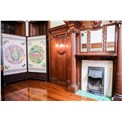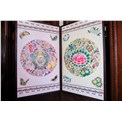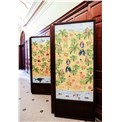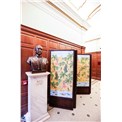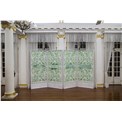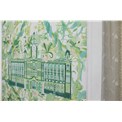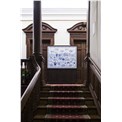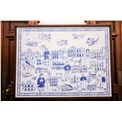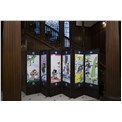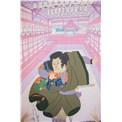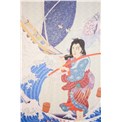-
History & Society
- Education in Pre-war Hong Kong
- History of Taikoo Sugar Refinery
- Hong Kong Products Exhibition
- Local Festivals Around the Year
- Post-war Industries
- Pre-war Industry
- The Hong Kong Jockey Club Archives
- Tin Hau Festival
- Memories We Share: Hong Kong in the 1960s and 1970s
- History in Miniature: The 150th Anniversary of Stamp Issuance in Hong Kong
- A Partnership with the People: KAAA and Post-war Agricultural Hong Kong
- The Oral Legacies (I) - Intangible Cultural Heritage of Hong Kong
- Hong Kong Currency
- Hong Kong, Benevolent City: Tung Wah and the Growth of Chinese Communities
- The Oral Legacies Series II: the Representative List of the Intangible Cultural Heritage of Hong Kong
- Braving the Storm: Hong Kong under Japanese Occupation
- A Century of Fashion: Hong Kong Cheongsam Story
Geography & EnvironmentArt & Culture- Calendar Posters of Kwan Wai-nung
- Festival of Hong Kong
- Ho Sau: Poetic Photography of Daily Life
- Hong Kong Cemetery
- Sketches by Kong Kai-ming
- The Culture of Bamboo Scaffolding
- The Legend of Silk and Wood: A Hong Kong Qin Story
- Journeys of Leung Ping Kwan
- From Soya Bean Milk To Pu'er Tea
- Applauding Hong Kong Pop Legend: Roman Tam
- 他 FASHION 傳奇 EDDIE LAU 她 IMAGE 百變 劉培基
- A Eulogy of Hong Kong Landscape in Painting: The Art of Huang Bore
- Imprint of the Heart: Artistic Journey of Huang Xinbo
- Porcelain and Painting
- A Voice for the Ages, a Master of his Art – A Tribute to Lam Kar Sing
- Memories of Renowned Lyricist: Richard Lam Chun Keung's Manuscripts
- Seal Carving in Lingnan
- Literary Giant - Jin Yong and Louis Cha
Communication & Media- Hong Kong Historical Postcards
- Shaw Brothers’ Movies
- Transcending Space and Time – Early Cinematic Experience of Hong Kong
- Remembrance of the Avant-Garde: Archival Camera Collection
- Down Memory Lane: Movie Theatres of the Olden Days
- 90 Years of Public Service Broadcasting in Hong Kong
- Multifarious Arrays of Weaponry in Hong Kong Cinema
-
History & SocietyGeography & EnvironmentArt & Culture
-
View Oral History RecordsFeatured StoriesAbout Hong Kong Voices
-
Hong Kong Memory
- Collection
- All Items
- Wilson Shieh x Dr Sun Yat-sen Museum (Image)
Recently VisitedWilson Shieh x Dr Sun Yat-sen Museum (Image)
Exhibition floor plan and artwork captions of 'Wilson Shieh x Dr Sun Yat-sen Museum'. Promotional vertical banner designed by Ken Lo, design partner. Opening ceremony setting designed by Ken Lo, design partner. Exhibition board designed by Ken Lo, design partner. Guangdong, late Qing Dynasty by Leung Lai Man, Jess
Dr Sun Yat-sen was born in the Tongzhi period (1862-1874) of the Qing Dynasty, and until he was thirteen, lived in his hometown in Cuiheng Village in Xiangshan County, Guangdong Province. The region produced a local type of enamel ware called Guangcai, or 'Canton enamels', usually with landscapes, figures, flowers, birds and animals executed in rich, vibrant colours and a lively painting style. Such images and decorations constitute the theme of this panel.Guangdong, late Qing Dynasty by Leung Lai Man, Jess (portion)
Dr Sun Yat-sen was born in the Tongzhi period (1862-1874) of the Qing Dynasty, and until he was thirteen, lived in his hometown in Cuiheng Village in Xiangshan County, Guangdong Province. The region produced a local type of enamel ware called Guangcai, or 'Canton enamels', usually with landscapes, figures, flowers, birds and animals executed in rich, vibrant colours and a lively painting style. Such images and decorations constitute the theme of this panel. Hawaii, 19th century by Cheung Ting Ting (portion)
Dr Sun Yat-sen went to Hawaii when he was thirteen to visit his elder brother, Sun Mei, who owned a plantation there. He later enrolled in missionary schools. Four years later he was sent back to China as his brother was opposed to his being baptised and becoming a Christian. Hawaii at that time was still under the rule of the local indigenous dynasty. The painting here features rich motifs of tropical forests. Hawaii, 19th century by Cheung Ting Ting (portion)
Dr Sun Yat-sen went to Hawaii when he was thirteen to visit his elder brother, Sun Mei, who owned a plantation there. He later enrolled in missionary schools. Four years later he was sent back to China as his brother was opposed to his being baptised and becoming a Christian. Hawaii at that time was still under the rule of the local indigenous dynasty. The painting here features rich motifs of tropical forests. Hong Kong, Victorian era by Wong Wing Shan (Flyingpig)
After his return to hometown, followed by a few detours, Dr Sun Yat-sen arrived in Hong Kong later. He entered the Diocesan Home and Orphanage, then the Central School and later, the newly-established College of Medicine for Chinese, Hong Kong. He spent a total of nine years studying in Hong Kong. As a British colony under Queen Victoria's rule, Hong Kong Island showed a lot of British influence at the time, whether in its period architecture or fashionable way of life. The Victorian wall-paper and the academic institutions where Dr Sun Yat-sen studied are symbolic of this period. Hong Kong, Victorian era by Wong Wing Shan (Flyingpig) (portion)
After his return to hometown, followed by a few detours, Dr Sun Yat-sen arrived in Hong Kong later. He entered the Diocesan Home and Orphanage, then the Central School and later, the newly-established College of Medicine for Chinese, Hong Kong. He spent a total of nine years studying in Hong Kong. As a British colony under Queen Victoria's rule, Hong Kong Island showed a lot of British influence at the time, whether in its period architecture or fashionable way of life. The Victorian wall-paper and the academic institutions where Dr Sun Yat-sen studied are symbolic of this period.Macau, Portuguese style by Cho Wing Ki
Upon finishing his medical training in Hong Kong, Dr Sun Yat-sen practised medicine in Macau. After he embarked on his revolutionary enterprise, his family came to Hong Kong from China and later relocated to Macau. His first wife, Lu Muzhen, and the family of his second daughter, Sun Wan, lived in Macau until their deaths. Ever since the 17th century, Macau had been a Portuguese colony and the European influence on its architecture, particularly churches, was very prominent. The blue-and-white ceramic tiles in Portugal style have become an iconic feature of Macau, and are therefore featured on this panel. Macau, Portuguese style by Cho Wing Ki (portion)
Dr Sun Yat-sen's family was closely associated with Macau. Upon finishing his medical training in Hong Kong College of Medicine, Dr Sun Yat-sen practised medicine in Kiang Wu Hospital in Macau. His first wife, Lu Muzhen, and his second daughter, Sun Wan, lived there until their deaths. Cho Wing Ki, a member of Wilson Shieh's team, emulates the blue-and-white ceramic tiles in Portuguese style to decorate this screen. Renowned characters and landmarks of Macau are depicted to represent the colonial culture. Japan, Meiji period by Cheng Ting Ting and Cho Wing Ki
After failure of first uprising in 1895, Dr Sun Yat-sen underwent an exile in Japan. Cheng Ting Ting and Cho Wing Ki, members of Wilson Shieh's team, adopt the representative style at that time, ukiyo-e, in painting this screen. Japan, Meiji period by Cheng Ting Ting and Cho Wing Ki (portion)
After his failure of first uprising in 1895, Dr Sun Yat-sen began a sixteen-year exile in Japan where he established his main revolutionary base, and he had the support of many Japanese. Later he set up the Tongmenghui (Chinese Revolutionary Alliance) there. The most characteristic artistic style of the Edo to Meiji periods was undoubtedly the ukiyo-e woodblock prints, the colours and compositions of which also inspired the Impressionist school and Van Gogh in Europe. The ukiyo-e genre depicted Japanese customs and lifestyles in detail, and is aptly regarded as the representative feature of pre-modernist Japanese art. Japan, Meiji period by Cheng Ting Ting and Cho Wing Ki (portion)
After his failure of first uprising in 1895, Dr Sun Yat-sen began a sixteen-year exile in Japan where he established his main revolutionary base, and he had the support of many Japanese. Later he set up the Tongmenghui (Chinese Revolutionary Alliance) there. The most characteristic artistic style of the Edo to Meiji periods was undoubtedly the ukiyo-e woodblock prints, the colours and compositions of which also inspired the Impressionist school and Van Gogh in Europe. The ukiyo-e genre depicted Japanese customs and lifestyles in detail, and is aptly regarded as the representative feature of pre-modernist Japanese art.Copyright © 2012 Hong Kong Memory. All rights reserved.
| Set Name |






